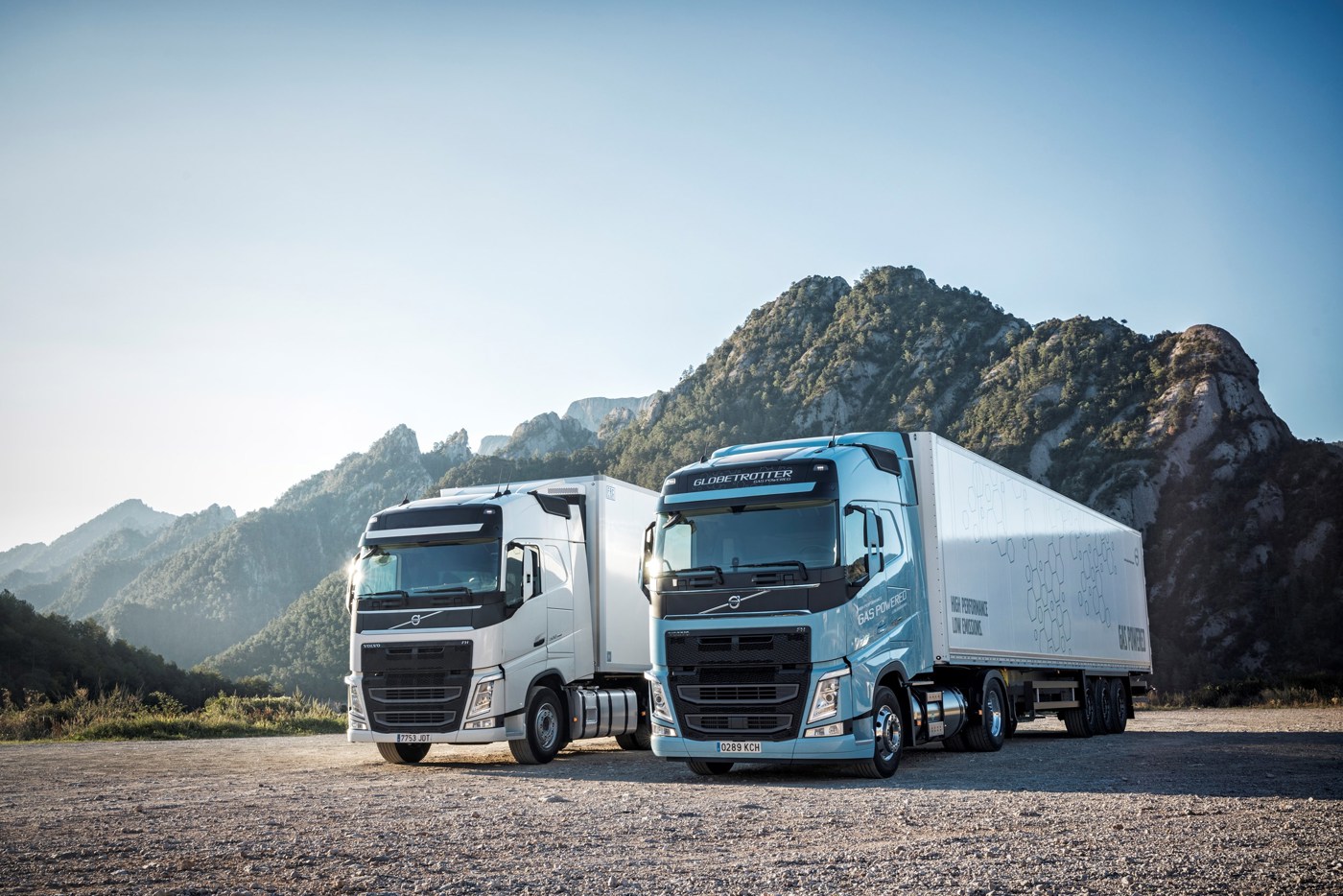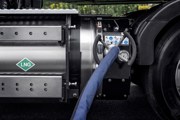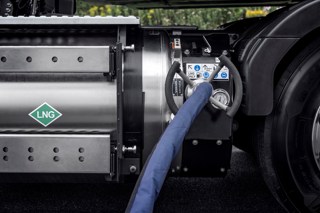Review
Tim Campbell's test drive of the Volvo FH 460 truck finds that the alternative fuel option does not hinder drivability.
t’s good to see a global manufacturer deciding to commit to one solution amid the many choices of alternative fuel available to the road transport industry.
After a large amount of research and development, the engineers at Volvo Trucks have concluded that for European truck customers with regional and long haul trucking businesses liquid natural gas (LNG) is the most appropriate or, at the very least, most promising alternative fuel.
It appears to have struck the right cord with many. For instance Volvo has already won the Sustainable Truck of the Year 2018 award in Italy with the new FH LNG.
“With the launch of the new LNG range ... Volvo is definitely raising the level of natural gas-powered trucks,” wrote the jury in its assessment.
As Volvo Trucks points out, a heavy transport operator covering 75,000 miles a year who chooses natural gas instead of diesel can cut CO2 emissions by 18-to-20 tonnes.
Given that last year alone more than 264,000 heavy trucks were registered in the EU, this means there is immense potential for significantly reducing emissions from heavy commercial traffic.
As befitting a regional and long haul operation, the LNG solution is available on the two heavier ranges within the Volvo Trucks portfolio, the FM and FH models.
Not all models have the LNG alternative. Currently the D13 engine (re-named G13 for the gas version) is the only engine available, at the 420PS and 460PS power settings.
The D13 and G13 engines perform very similarly with the main difference being in the slightly later development of the power up the rev range although the power drop-off at the top end is not as noticeable on the gas engine.
Understandably, one of the main considerations of any truck driver and operator is the range which, of course, is linked to the fuel consumption and tank size.
Volvo Trucks offers three LNG tank sizes for the FM and FH models.
These are 115kg (LNG is bought/measured by weight), 155kg and 205kg. They should offer ranges on a 40 tonne gvw combination between fills of 340 miles, 465 miles and just more than 620 miles.
Naturally these figures are subject to the normal caveats of operational cycle, terrain type, weight and, of course, the heaviness of the right foot!
On approaching the FH there’s not much to give away the fact that it is LNG-powered.
For instance, were it powered by compressed natural gas (CNG) there would probably be the tell-tale row of bottles behind the cab.
But, as LNG is basically the concentrated liquid form of the gas, it all fits within a standard-looking fuel tank and confirms the fact that 0.72kg LNG has the same energy as one litre of diesel.
Interestingly, the FH also has a diesel tank; indeed it has an AdBlue tank to ensure it meets the Euro VI emissions standard and the reason for the diesel tank is that Volvo’s LNG system injects around 5 % of diesel with the gas.
After climbing the steps to the FH cab floor and sitting on the supportive leather driver seat, it soon becomes obvious there’s very little to distinguish this FH from a standard diesel model.
The main giveaway appears only after switching on the ignition as the LCD display to left of the rev counter indicates levels for diesel, AdBlue and LNG.
We selected ‘D’ for drive on the right armrest (it’s a left-hand drive truck) and before you knew it we were away, with not a hint of gas behind us.
We mentioned the power curve earlier, but perhaps more importantly it’s the torque that matters when looking at driveability and maintaining a good level economical driving speed irrespective of the type of terrain.
The torque curve on the gas-fuelled 460PS in theory cuts in around 200rpm later than its diesel equivalent so when we started to demand a little more from the engine as we approached a hill, we were pleasantly surprised to feel a healthy amount of torque even at 950-1,000rpm. It was not far off a conventional truck.
According to Volvo Trucks, the same “torque characteristics” can be said for the 420PS variant with a similar torque output at 2,100Nm of the diesel (460PS is 2,300Nm) so we expect the 420PS would be just as driveable.
Moving through the gears, the 12-speed ‘I-shift’ feels just as smooth as normal with no discernible difference and this is mirrored by the in–cab noise. Meanwhile, the visibility in the FH is as good as it gets.
The semi-wrapround dash houses the electronic handbrake as well as the heating and ventilation controls plus, what appears to be hundreds of buttons.
In front of the driver sits the central instrument panel which, unusually, houses just one centre dial, very cleverly having the speedometer on the outside and the bottom third indicating the engine rpm, complete with a coloured dynamic ‘eco’ zone.
There are three steering wheel stalks, two on the right providing controls for the four-stage engine brake and the windscreen wipers, while the indicators and high beam lights are controlled by the left stalk.
The FH 460 coped well with the mixture of flat and hilly terrain and, with an all up weight of 40 tonnes, showed no trouble pulling the weight, despite many operators appearing to prefer the 480-520PS power range in recent years.
Verdict
Volvo has created a very appealing and persuasive argument for its version of LNG for regional and long-haul operators throughout Europe and, we suspect, North America.
If the infrastructure develops as quickly as Volvo Trucks feels it will, then LNG appears to be a very logical alternative to purely diesel power for this type of operation.
Model tested: Volvo FH 460, 4x2T



























